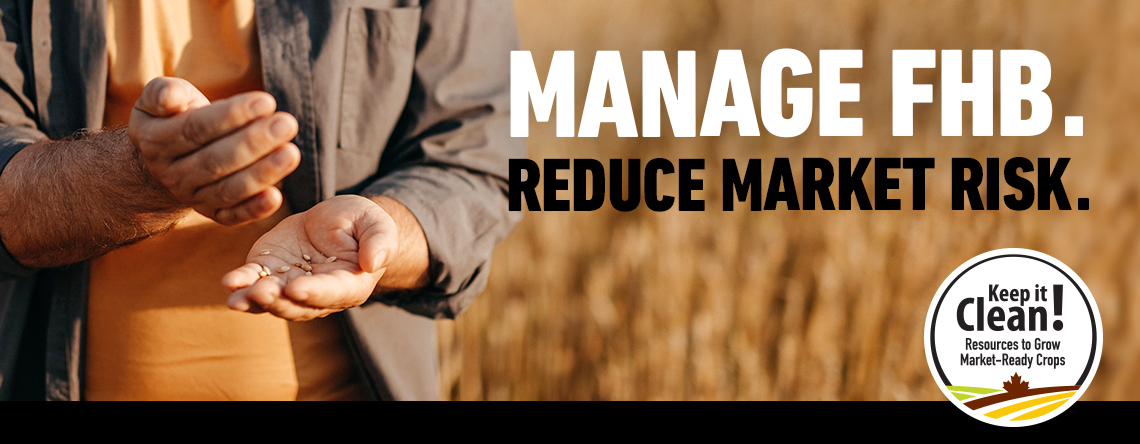Help your customers protect the marketability of their wheat, barley and oats by encouraging them to take a proactive approach to managing fusarium head blight (FHB) this growing season.
In addition to hurting yield and quality, FHB can create market risk for cereal crops when it produces potent mycotoxins, such as deoxynivalenol (DON).
The presence of DON, commonly known as vomitoxin, can limit grain’s end uses and marketing potential, as most importing countries have strict limits on DON levels. Shipments that exceed acceptable levels of DON could be rejected, at tremendous cost to the industry, and may impact Canada’s reputation as a producer of high-quality cereal grains.
To help growers protect their investment and the marketability of their cereal crops, encourage them to stay ahead of FHB this growing season.
Keep it Clean recommends growers make use of provincial risk maps and scout early for crop stage and environmental conditions. If risk is high during the susceptible stage – when flowering coincides with hot, humid weather – they may choose to apply a fungicide to suppress infection.
For more FHB management best practices, including harvest tips for FHB-infected crops, visit Keep it Clean - Stay Ahead of Fusarium.
Keep it Clean Advisor Resources
Looking for free, sharable content for your retail’s e-newsletter or blog, or information to help inform and guide conversations with growers? Check out the Keep it Clean Advisors section at keepingitclean.ca/advisors.
Advisors can also download helpful tools, including the Keep it Clean Pre-harvest Glyphosate Staging Guide, 2020 Products of Concern handouts and the FHB Management Infographic.
Related Articles
- CAAR News CAAR recently participated in the Pulse Value MRL Working Group, a meeting to review the market risk of new pesticide products coming to market, and/or products currently on the market that have experienced an MRL ch...
- Keep it Clean – 2021 Pre-Harvest Tips and Tools Webinar CAAR members are encouraged to participate in the following Keep it Clean Pre-Harvest Tips Webinar for timely pre-harvest tips and tools to protect the marketability of Canada’s canola, cereal and pulse crops on Thur...
- Webinar: Taking Advantage of Carbon Pricing Opportunities CAAR members are encouraged to participate in the Webinar: Taking Advantage of Carbon Pricing Opportunities on September 29, from 10:00 am to 12:00 noon (EDT). The Agriculture Carbon Alliance and Fertilizer Canada...
- AAFC Stakeholder Engagement regarding COVID-19 Paused During Election As you are all aware, the federal general election will be held on September 20th. This means we are now in a writ period which impacts Agriculture & Agri-Food Canada’s (AAFC) capacity to engage with stakeholders...
- Government says it is pausing the proposed increases to MRLs After a federal decision to halt the proposed increases to herbicide MRLs, CAAR gets to work to renew its efforts to ensure the ag retail industry has its say. Last month’s announcement by the Government of Canada...
 How to resolve AdBlock issue?
How to resolve AdBlock issue? 


Join the discussion...
You must be logged in as a CAAR member to comment.
Report
My comments